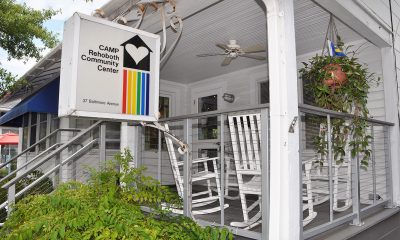a&e features
Paradise lost: Remembering the popular Rehoboth men’s guest house
Beach town’s pioneering B&B welcomed gay clientele before arrival of AIDS
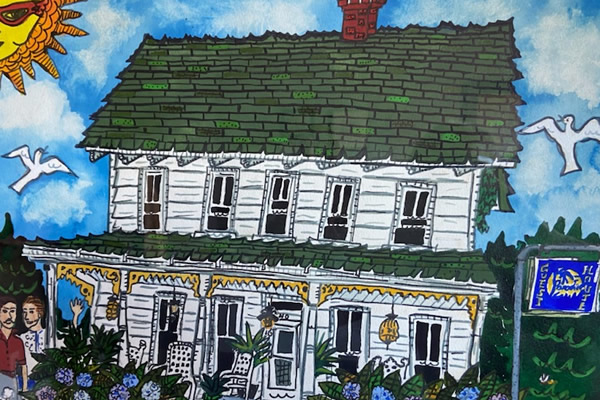
“What hath night to do with sleep?” John Milton, A Journey to Paradise
In February 1987, 30-something Bill Courville was at his Mt. Pleasant neighborhood home. He opened the new edition of the Washington Blade. As usual, he read it from beginning to end. With a Ph.D. in psychology, Bill enjoyed the classifieds. It lifted his spirits after reading obituaries of gay men and news of meager AIDS funding from the Reagan administration. Sandwiched between personals and escorts were real estate sales listings, including a one-inch ad about a B&B in downtown Rehoboth Beach, Del.
Bill thought about his youthful days living in New Orleans and working at the Maison De Ville, a small dusty red stucco painted guest house overlooking Toulouse Street. There Tennessee Williams had once lived while penning “A Street Car Named Desire” — when not sipping Sazarac cocktails in the garden courtyard.
He circled the ad and placed it on the kitchen counter for his lover, Bob, to read. The couple had met two years earlier crossing the P Street Bridge and had gradually merged their lives. After Bob looked at the ad, Bill suggested: “Let’s go look at this! We will have a business and an income — and a place to live!” Born in Minnesota, Bob Jerome, the more cautious of the pair, had grown up in California, attending college in Claremont and later working as a Senate staffer. Like Bill, he had a doctorate and traveled throughout the world before their P Street encounter. Unlike Bob, however, Bill never had been to Rehoboth. Nevertheless, Bill insisted this could be their next adventure or at least an excuse to visit the shore off-season.
“It’s a great seasonal resort,” Bob responded positively. “Everybody goes there. There’s gay life!”
The next weekend, they crossed the Chesapeake Bay Bridge and drove to Paradise. Rehoboth was mostly shuttered. But the Renegade bar was open at the fringe of town as was the Blue Moon along the gaying Baltimore Avenue. Driving one street over, they arrived at 40 Maryland Ave.
John, the Realtor, whose lover “Dolly” performed at the Moon, met the couple at the 19th-century house. “It was pretty awful,” remembers Bill. The fatigued Paradise Guest House sign was washed-out and the wide front porch with its handcrafted trellis lusted for paint. The pipes were drained. There was no heat or electricity. There were slivers of mirrors glued on living room walls, a disco ball hanging from the ceiling, 1930s over-stuffed maroon chairs, and yard sale grade furniture facing an old TV. The scent of stale cigarette smoke lingered in the ceilings and walls.
As they wandered through the 28 rooms — most barely wide enough for a floor mattress with a thin plastic sheet and an occasional odd-fitting dresser — they eyed stacks of men’s magazines (Honcho, Mandate, Bound & Gagged), iconic videos like “Boys in the Sand,” “Stryker Force,” and “Pacific Coast Highway,” along with chests of dildos in every imaginable size. Off the living room, a narrow passageway at a left angle to the main corridor led to the first-floor bedrooms. At the end was a trap door. They didn’t venture down. “Seasonal resorts like the Paradise were kind of like bars,” Bill explains. “They look great at night but don’t look at them during the day.”
On their drive back, the couple chatted about the venture. “I told Bill that if we were going to invest, he needed to run it so we could learn the business.” Bob knew his income would cover their personal expenses as long as Bill was willing to do the day-to-day management. “We were youngish. I don’t think we thought about what a massive undertaking it was…. But it seemed right.”
After purchasing the property, they along with some friends had just a few months before the 10-week season began on Memorial Day weekend. “We’d drag them down there and make them work, saying, ‘Oh, you can go to the beach.’ But, of course they never did go as it was always cold and rainy.” Bill wondered, “Does the sun ever shine here?”
Those next weeks were frantic: discarding discolored mattresses and sex toys; tearing out faux bedroom walls to restore the original 14 rooms; buying new white wicker furniture; upgrading the bathrooms, deck, and kitchen. Everything was thoroughly cleaned. Fresh white paint glistened on the walls and gray-painted floors replaced piles of tattered, sandy rugs. A local lesbian contractor built sturdy outside showers replacing a rickety wooden stall connected by a water hose and lined with reflective aluminum foil — designed more for strutting than showering.
“It was a huge undertaking,” admits Bill. “Everything we had was sunk into it. It had to be open!” He remembers one man calling a few days before asking if he could change check-in to Wednesday. “No, you can’t,” Bill said flatly. “You can come Friday at 2 o’clock, but not one minute sooner!”
With little time to advertise in this pre-Internet era, they did their best to explain the changes to former guests, beginning with its new name: The Rehoboth Guest House. More importantly, it now was open to lesbians as well as straights and there was no smoking. “We had a mix of friends,” says Bill. “So it would be gay-owned and operated but pretty much open to whoever wanted to come…. We had been discriminated against for most of our lives. If you don’t want to come you don’t have to.”
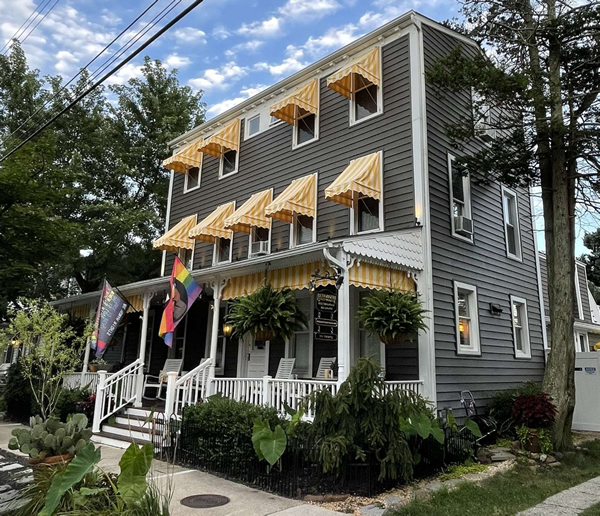
Remembering Paradise
Reactions from Paradise veterans varied when Bill and Bob discarded the blue, white, and yellow “Paradise Guest House” sign and, more importantly, its ethos of male eros. One of the new owners’ early supporters was Charlie Allen, who worked in the Baltimore schools but summered in Rehoboth. “He was writing a book,” Bill reveals, “called ‘Summer Sisters’… they were sisters for the summer.” Bob interjects, “The other part of the title was ‘Some Are Not.’ So, it was ‘Summer Sisters [pronounced Some Are Sisters]: Some Are Not.’Charlie died before publishing his book—which has never been found.
Unlike Charlie, “some hardcore folks were upset,” Bob recalls. “This used to be a gay male oasis” where men could “be themselves: wearing dresses; walking around naked; having piercings everywhere. They could get out of their suits and live the lives they wanted with people like them.” In an understanding tone, Bob adds: “That’s hard to take away.” The Paradise was a safe spot not only for Philadelphia accountants, D.C. staffers, and Baltimore teachers, but college kids enjoying summer break, career embarking twinks, and closeted locals seeking safe harbor.
Charlie was best friends with the German-accented Paradise owner Herbert Koerber and his boyfriend, Alvarado Ortiz-Benavides, whom everyone called “Mami”— colloquial Spanish for sweetheart. A gregarious man with fading hair and a reddish beard, Charlie often helped Mami with housekeeping and other chores. Mostly, though, he just enjoyed the sexual freedom of Paradise and the camaraderie among male guests. Some returned each year for a week, others visited more frequently for long weekends, and a few stayed the entire summer. Most guests were younger than Charlie’s 40 odd years, but everyone seemed to get along.
Most of Koerber’s clientele came from word-of-mouth advertising, although there was a classified ad in summer issues of the Washington Blade: “friendly guesthouse, close to beaches and bars.” One of the very first media stories about gay Rehoboth appeared in the May 1980 issue of this iconic paper. It described Paradise as “utterly comfortable” and quoted 38-year-old Herbert: “Tell people I can put them up — maybe even give them a discount during the week — but on weekends, after the bars close, my lobby will be packed.”
Before Herbert opened Paradise, in 1979, there were no openly gay-owned or gay-friendly advertised guest houses in Rehoboth. The Sandcastle, a decrepit speakeasy-like rooming house owned briefly by several gay men, had burnt to the ground four years earlier. The grand Pleasant Inn Lodge, hosted by the reclusive, debonair bachelor Peck Pleasanton and his octogenarian mother, Bessie, welcomed an occasional well-behaved “single” gentleman.
During eight seasons, Paradise evolved as did Herbert and Mami. The two were an odd pair. Herbert, a “fussy queen” who swore like a sailor, was tall and thin with longish hair and a handlebar mustache. He was always tanned even though his forehead would get beet red given his German complexion. The much shorter Mami, whose family was from South America, was soft-spoken and very sweet. Compared to the larger-than-life Herbert, he was less memorable to guests. Bob describes Herbert as “the German businessman. Mami was the onetime boy-toy.” They wintered in Key West, operating a gift shop and hawking kitsch souvenirs like black velvet paintings and seashell coasters.
Herbert monetized every aspect of Paradise, creating a sexual Disneyland. With 28 “teensy rooms the size of bathhouse cubicles,” there could be upwards of 50 men checked-in along with their friends and friends of their friends, wandering in during the night. However, the number of bathrooms — two full baths and two halves — did not expand. “It was shabby and crowded, but we were young and didn’t care,” one Paradise regular muses. “It had a reputation. It was our party house.”
The second floor became clothing optional with men often walking around with towels during midnight hours. Plywood partitions were set between rooms with guests on one side having a window and the other windowless. Herbert’s “summer curtains” served instead of doors, which allowed air (and guests) to circulate. Those with bedroom windows overlooking the sundeck could easily extend an invitation to a coconut-lotioned twink or a weightlifting hunk. “Everything went on at the deck and in the windows and rooms behind it,” recalls a frequent guest. There were late Saturday afternoon happy hours and skit contests. Staging was festive, if not overly decorative, with a jerry-rigged backstage area for costume changing. A raucous backyard crowd cheered contestants.
Originally, there was a huge gabled attic bedroom that required ascending a steep stairway. Herbert slashed it into a tiny single air-conditioned room with the remaining space transformed into an after dark playground full of mattresses with an aroma of poppers and pot. “Herbert turned every square inch of that attic into a bed sleeping sex area. It was masterful,” Bob says in a praiseworthy tone. “Every inch was geared toward pleasure” And, as he and Bill later discovered, There was a leather sling in the “dungeon,” a 10 x 12 cinder block walled room accessed only from the first floor trap door.
Room rates were low and backyard camping was just $5 for those bringing tents. Campers, though, had to be late night partiers. Before dawn, visitors often entered from the alley along a little path leading to the unlocked side gate. Nocturnal grunts, gasps, and groans harmonized to sounds of crashing waves. Back then, as one Paradise regular stresses, “Sex wasn’t a taboo thing. It was like going to lunch! It was as common as going for a cocktail.”
During the day, Herbert was often found in his flip-flops, T-shirt, and khaki shorts, puttering in the garden or tending to his beloved lacecap hydrangeas gracing the front yard. Herbert was estranged from his German-speaking family so Paradise regulars became his family. Friendly, he knew everyone by their first name but don’t ask to reserve a specific room. One returning guest remembers phoning Herbert for a reservation and requesting a first-floor room with a door: “Oh, honey!” Herbert laughed. “It’s just first come, first served.”
Herbert did repairs only when absolutely necessary. But he’d always be painting, using just one color: white. The exception was the wrap-around front porch, lined with rocking chairs, which had a gray floor and ceiling along with knob and tube wiring. Throughout the house, guests used it to hang clothes since there were no closets.
In the early to mid 1980s, Paradise thrived as a money making machine — a bathhouse on the beach. As the number of gay-owned restaurants and bars multiplied along with accompanying media attention, more gay men vacationed at Rehoboth and visited Paradise. “There was a routine,” one recounts. “You’d get up late. Get yourself down to the gay beach. Do a day at the ocean, getting too much sun. Then there was happy hour at the Moon. You had to be there and have a nice look. Then you’d go back, take a nap, and then go to dinner. Then, onto the Renegade!”
Herbert provided a weekend shuttle to the Renegade. About 10 o’clock, he’d drive up in his light colored blue and white ’60s VW van, hop out and, as a regular recollects, “Scream down the hallways: ’Get your asses down here!’” He shuttled guests back-and-forth, with the last pick-up at 1. ”I remember Herbert telling people in his heavy accent, ‘If you miss the last bus, you have to walk the fuck home!” But his gruffness masked protectiveness. ”He’d warn them he was going and he would even count!” Another frequent visitor remembers Herbert “as the kind of guy you’d call at 3 o’clock in the morning to say, ‘I’m in jail.’ And he’d be there.”
Paradise Lost
In 1980, reports surfaced about clusters of young gay men contacting Pneumocystis pneumonia. Granted the majority of infections and deaths from this “gay cancer” were in New York City and San Francisco, but the Washington Blade published a landmark front-page story, “Rare, Fatal Pneumonia Hits Gay Men,” inJuly 1981.
Herbert began to worry. One guest, living in New York City and volunteering as an AIDS buddy, remembers porch conversations with Herbert. ”He was talking about buying a second one. Then he said, ’I’m concerned since so many people are getting AIDS, I’m not sure whether or not I’ll have a clientele.’”
For many gays, Paradise was a rare time to be themselves and to enjoy the camaraderie and support from other men at a beach resort. Sadly, for some, it was also a death sentence. Sexual desire and psychological denial coupled with governmental inaction and public apathy fueled the AIDS pandemic.
After the 1986 summer season, Herbert and Mami sojourned, as usual, to Key West; Herbert never returned. ”I can remember being surprised to hear that he was ill,” laments a longtime patron. ”He went quickly; we had no indications he was ill.”
Herbert died a week before Bill and Bob opened on Memorial Day weekend. Mami was with him until the end. Like Paradise, he disappeared into history and, along with Herbert and many of his guests, would be remembered by few.
James Sears’ latest book, “Behind the Boardwalk: Queering the History of Rehoboth Beach” will be published next year. Tom Kelch, manger of the Rehoboth Beach Guest House, contributed research to this article.
a&e features
Have yourself a merry John Waters Christmas
Annual holiday show returns to Alexandria and Baltimore
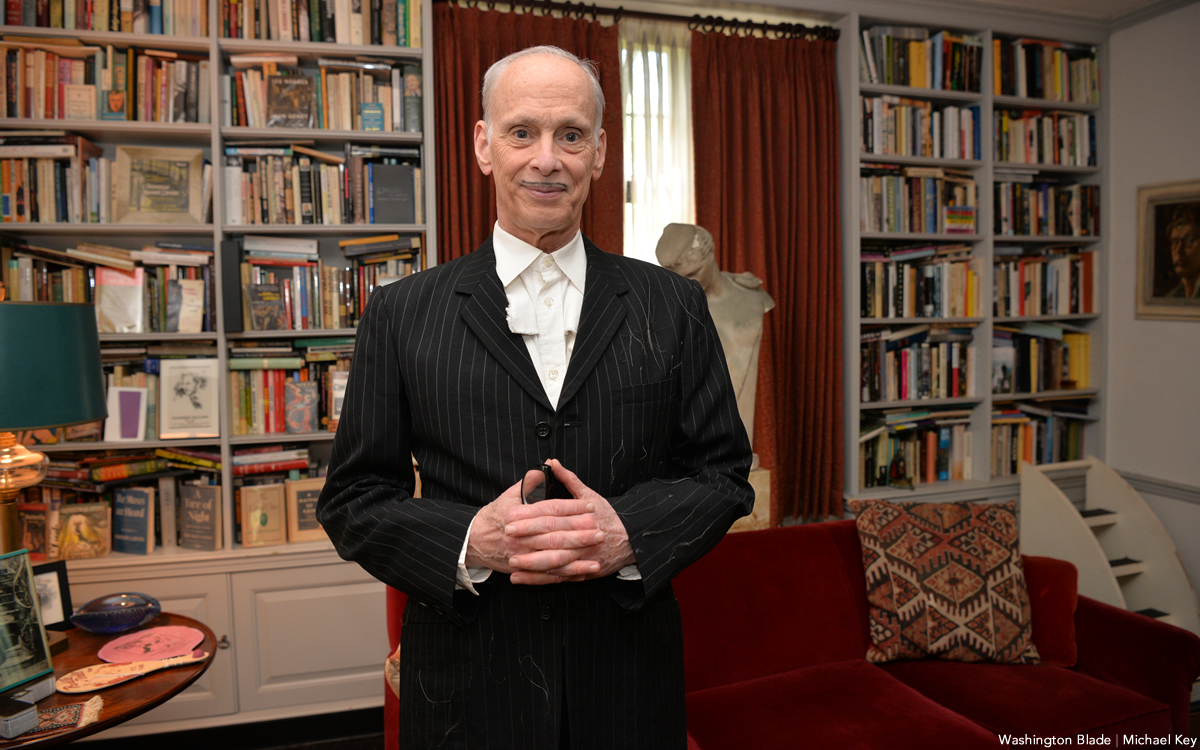
When it comes to iconic Christmas scenes in movies, none can top the tree-toppling tantrum thrown by cha-cha heels-deprived Dawn Davenport in John Waters’s fifth full-length feature “Female Trouble” from 1974. Therefore, it’s not surprising that Waters continues to make art out of Christmas, performing his spoken word Christmas tour in cities across the country. Waters has even more reason to celebrate with the release of his new red vinyl 7” single, a cover of Little Cindy’s “Happy Birthday Jesus (A Child’s Prayer)” on the A-side, and “A Pig Latin Visit From St. Nicholas” on the B-side. If you’re still looking for unique Christmas gifts, consider this record. As always, John was kind enough to make time for an interview in advance of his tour dates.
BLADE: John, in preparation for this interview with you, I went back and listened to Little Cindy’s original rendition of “Happy Birthday Jesus (A Child’s Prayer)” on your “A John Waters Christmas” CD.
JOHN WATERS: One thing I did, if you notice, I make the same stumble in my recording that she did in the original.
BLADE: It sounded to me like she got choked up.
WATERS: No, I think she just stumbles over a word, so I stumbled over the same word. It’s appropriation, insanely.
BLADE: Is this a song you first became aware of in your youth or when you were an adult?
WATERS: When I was doing the Christmas album, I had this friend named Larry Benicewicz. He was kind of my idea man with music. He knew every single old record. I would say to him, “Weird Christmas songs,” when we were doing a soundtrack, or a song about bears, or a song about this, and he would give me all these tapes. It was one of the ones he played for me. A lot of the songs I put in my movies and on my records, I did know as a kid. I did not know this one, but I immediately embraced it. I don’t think it’s campy. I think it really is spiritual in a weird way. My doing it makes it a novelty record. I am really for novelty records, and there aren’t any anymore. Why was there not a COVID novelty record? That’s insane. The dance “The Bug” that’s on the “Hairspray” soundtrack would be perfect for COVID.
BLADE: The thing that struck me was that for a Christmas song in the voice of a child, a kind of death pall hangs over it, with lines like, “If I was good you’d let me live with you” and “they nailed you to the cross, they wanted you to die.”
WATERS: All of it! When I see children at midnight mass kneeling in front of a nude man nailed to a cross, I feel like I’m at The Eagle! It is S&M, it’s creepy. I took the same cover (photo) from her record to parody and put my face on it. The same thing I did with The Singing Dogs last year when I covered (their version of) “Jingle Bells.” I’m really into novelty records. I love them and I’m trying to bring them back. I don’t expect anybody to ever play these records. Even The Singing Dogs one said on it, “Please do not play this record” [laughs]. And the flipside, the Pig Latin version, is almost impossible to listen to.
BLADE: I’m so glad you mentioned that. “A Pig Latin Visit From St. Nicholas” reminded me of the lost art of speaking in Pig Latin. I also recall watching the PBS series “Zoom” as an adolescent and learning to speak “ubbi dubbi,” a distant relative of Pig Latin. Do you think that the time is right for a Pig Latin or ubbi dubbi revival?
WATERS: Here’s the thing, I never could pick up any language, except Pig Latin. I’ve been in every foreign country. Foreign countries have given me money to learn to speak the language. I can never do it! But Pig Latin…my parents and other parents in the ‘50s spoke Pig Latin so kids couldn’t understand what they were saying. Then my mother taught it to me, and I used it. The hardest take to shoot in “Pink Flamingos” was not eating the dog shit. It was when the cast skipped, in one take, saying “E-way, are-yay e-they ilthiest-fay eople-pay in-hay e-they ole-hay ide-way orld-way.” We’re the filthiest people in the whole wide world in Pig Latin. We had to do so many takes so they could do it once without screwing it up. In “Polyester,” Edith (Massey) answers the phone, “ello-hay.” I did a photo piece where it was all subtitled in Pig Latin. Like “osebud-Ray” (from “Citizen Kane”) or in “Streetcar,” “ella-Stay!” [Laughs] All the iconic dialogue translated into Pig Latin. My assistant who helped me do it, had never heard of Pig Latin. She really got good at it because she lived in many foreign countries and can pick up languages. But it’s not that easy to do it correctly and read it. Your computer will translate into Pig Latin.
BLADE: AI understands Pig Latin?
WATERS: I guess that’s AI. It wasn’t 100% right, but it was close. I can speak it if I look at it, but just do a bit at a time. It was a challenge that no one would possibly care about or want to do.
BLADE: I think you pulled it off very well.
WATERS: If you want people to leave on Christmas morning, you put it on. That’s how you get your guests to leave. It’s time to go.
BLADE: Ood-gay i-bay! How did your relationship with record label Sub Pop, which released 2021, 2022, 2024, and new 2025 holiday singles, come about?
WATERS: I believe the first thing I did for them was “Prayer to Pasolini.” They came to me through Ian Brennan. He’s won a couple Grammys for World Music, but he is also is one of my agents who does the Christmas tour and a lot of my shows, anything with music. He helped me arrange each one of the songs. He had a relationship with Sub Pop. It was perfect. My friends in Baltimore, (the band) Beach House, have had huge success.
BLADE: That’s right, they’re on Sub Pop!
WATERS: Yes! I’m happy to be on it. I’ve even been to the warehouse and posed for pictures like Jackie Suzanne used to do.
BLADE: Is there any chance that “A John Waters Christmas” might be reissued on vinyl by Sub Pop?
WATERS: No. It’s such a nightmare to get the rights and to renew them. You have to find the publisher and the writer, and they usually hate each other. It doesn’t matter if it’s obscure or famous, it’s hard to get. You have to make the deal. The singer doesn’t get anything unless they play it on the radio. It would be so complicated legally, and there would be such a [laughs] tiny audience for it. I hope it will come out again. The same thing with the one for Valentine’s Day. I had two of them that did quite well when they came out; “A Date With John Waters and “A John Waters Christmas.” The “John Waters Christmas” album is still the soundtrack that plays whenever I’m doing my spoken word Christmas show as people are entering the theater.
BLADE: Aside from your annual Christmas show tour, what else do you do for the holidays now, and are there any traditions that you’ve carried over from your family?
WATERS: Certainly! I have two sisters, my brother’s widow, and me, so there are four and we take turns each year to have the Christmas dinner. Mine was last year. An entire sit-down dinner. Mom’s China, the silverware, the entire full dinner. It’s pretty traditional. I don’t have a Christmas tree, but I do decorate the electric chair from “Female Trouble.” That is a tradition in my family. We do have Christmas decorations, but they’re usually weird ones that fans sent me. I have one with Divine knocking over the Christmas tree, and the Christmas tree lights up, all sorts of amazing things. There is definitely a tradition here that might be a little altered, but it is definitely a tradition. I used to have a giant party every year, but COVID ended that. I still wouldn’t want 200 people in my house breathing right now.
BLADE: I was looking at your tour schedule and wondered if there are any new cities in which you’ve never performed the John Waters Christmas show that have been added to this year’s schedule?
WATERS: I don’t think there’s a city in America in which I haven’t done one show! The only places I haven’t been to are Hawaii and Alaska. I could do it there, but it’s too long on a tour. I can’t think of a city I haven’t played in in America over the last 50 years. The Christmas show is completely different every year. It doesn’t matter if you saw it last year.

Some gifts scream practical, others whisper luxury, and a few flat-out blur the lines. From cocoa that feels ceremonial to a cologne that linger like a suggestive smirk, this year’s ultimate gift picks prove that thoughtful (and occasionally naughty) presents don’t have to be prosaic. Welcome to your holiday cheat sheet for festive tangibles that get noticed, remembered, and maybe even result in a peck of gratitude planted under the mistletoe. Consensually, of course.
Amber Glass Champagne Flutes
Pop the champs – but make it vintage. These tulip-shaped stunners in amber-tinted glass bring all the Gatsby vibes without the Jazz-age drama. Whether you’re toasting a milestone or celebrating a Tuesday, their seven-ounce capacities and hand-wash-only care make ‘em as practical as they are pretty. Pair with a thoughtful bottle of bubs and gift with a glittering wink. $18, NantucketLooms.com
Disaster Playbook by Here Comes the Apocalypse
Because the end of the world shouldn’t be a solo act, this spiral-bound guide is your step-by-step roadmap to surviving and thriving when everything else goes sideways, which might be sooner than you think. Packed with checklists, drills, and a healthy dose of humor, it’s like a survival manual written by your most prepared (and slightly snarky) friend. Whether you’re prepping for a zombie apocalypse or, more realistically, REVOLUTION!, this playbook’s got your back. $40, HereComesTheApocalypse.com
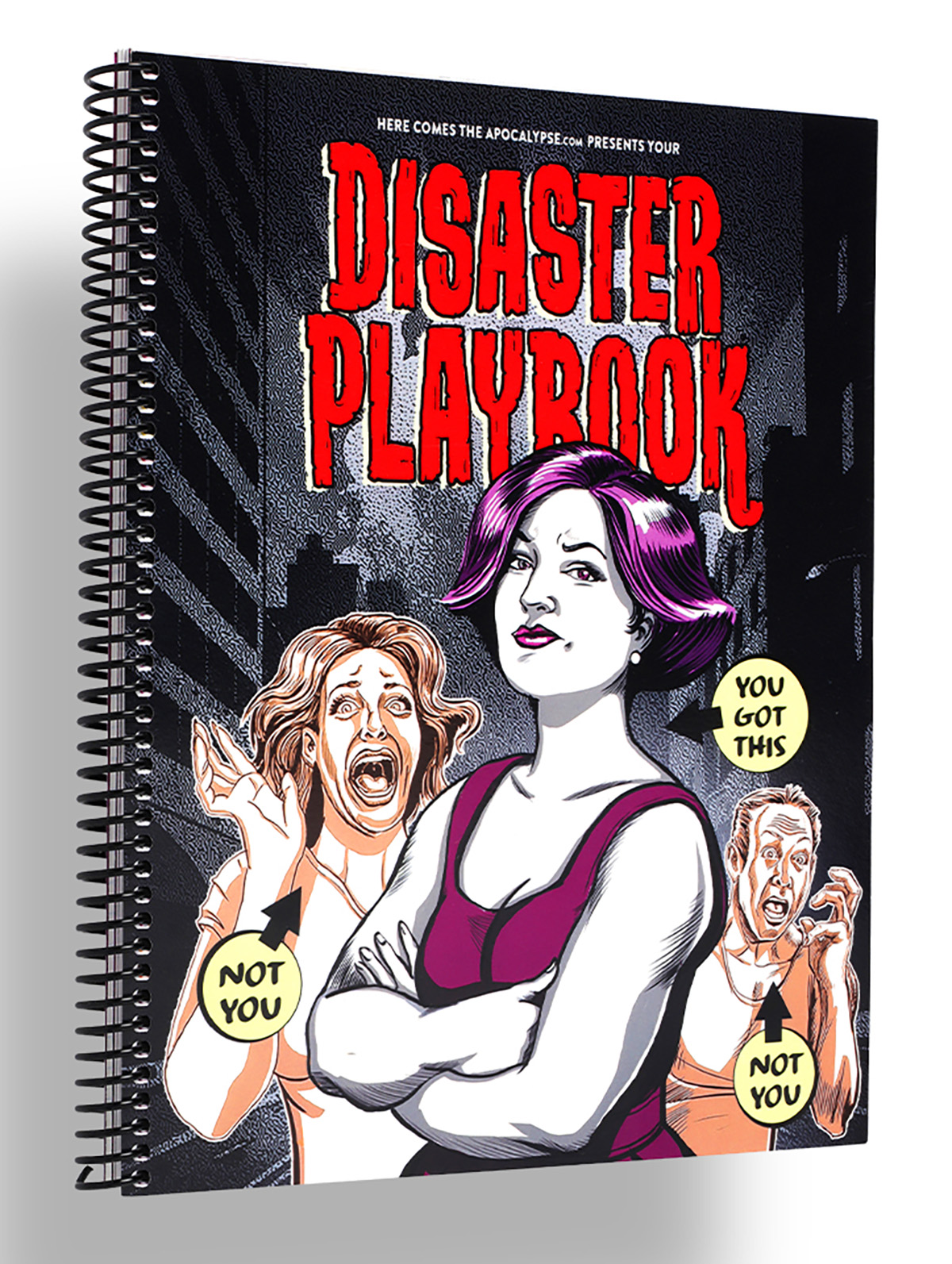
Wickless Vulva Candles
Bold, luxurious, and completely flame-free, CTOAN’s wickless candles melt from beneath on a warmer, releasing subtle, sophisticated fragrances, like sandalwood or lavender. The vulva-shaped wax adds a playful, provocative element to any space –perfect for a bedroom, living room, or anywhere you want elegance with an edge. A gift that celebrates form, intimacy and self-expression, no fire required. $39, CTOANCO.com
Villeroy & Boch Royal Classic Christmas Collection
Every meal is a mini celebration – with whimsy at every place setting – in Villeroy & Boch’s Royal Classic festive dinnerware collection that hits all the right notes. Made from premium German porcelain, it features nostalgic little toys, nutcrackers, and rocking horses in delicate relief, giving your holiday spread a playful but refined twist. Dishwasher- and microwave-safe, it’s luxe without the fuss. Gift a piece to a special someone, or start a collection they’ll use (and show off) for years to come. $22-$363, Villeroy-Boch.com
Greenworks Electric Lawnmower
You a ’hood queen who considers lawn care performance art – or just wants to rule the cul-de-sac in quiet, emission-free glory? Greenworks’ zero-turn electric mower has the muscle of a 24-horsepower gas engine but none of the fumes, drama or maintenance. Six 60V batteries and a 42-inch deck mean you can mow up to two-and-a-half acres on a single charge – then plug in, recharge, and ride again. It’s whisper-quiet, slope-ready, and smooth enough to make you wonder why you ever pushed anything besides your queer agenda. The perfect gift for the homeowner who loves sustainability, symmetry, and showing off their freshly striped yard like that fresh fade you get on Fridays. $5,000, GreenworksTools.com
Molekule Air Purifier
For the friend who treats their space like a sanctuary (or just can’t stand sneezes), the Molekule Air Pro is magic in motion. Covering up to 1,000 square feet, it doesn’t just capture allergens, VOCs, and smoke – it destroys them, leaving your air feeling luxury-clean. FDA-cleared as a Class II medical device, it’s serious science disguised as modern design. Gift it to your city-dwelling, pet-loving, candle-burning friend who likes their living room as pristine as their Instagram feed. $1,015, Molekule.com
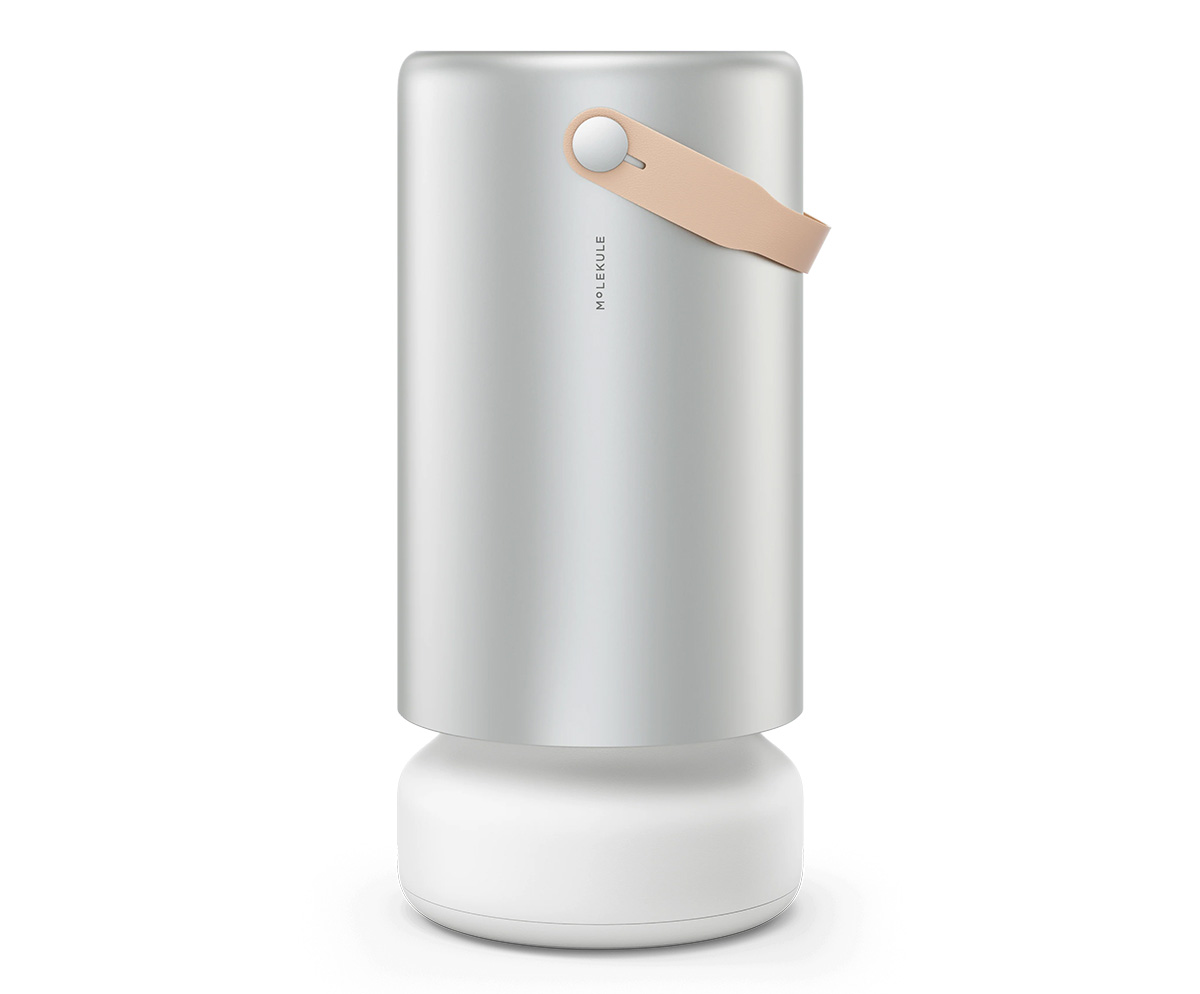
Cipriani Prosecco Gift Set
Effervescent with stone-fruit sweetness and a touch of Italian flair, the Cipriani Bellini & Prosecco gift set brings brunch-level glamour to any day of the week. The Bellini blends rich white-peach purée with sparkling wine, while the dry ’secco keeps things crisp and celebratory. Pop a bottle, pour a flute, and suddenly winter weeknights feel like a party – even with your pants off. $36, TotalWine.com
Woo(e)d Cologne
British GQ recently crowned Woo(e)d by ALTAIA the “Best Date Night Fragrance,” and honestly, they nailed it. Confident without being cocky – smoky gaïac and Atlas cedarwood grounds the room while supple leather and spicy cardamom do all the flirting – it’s a scent that lingers like good conversation and soft candlelight. Gift it to the one who always turns heads – or keep it for yourself and let them come to (and then on) you. $255, BeautyHabit.com

Lococo Cocoa Kit
Keep the run-of-the-mill mugs in the cabinet this Christmas and pull out Lococo’s handcrafted Oaxacan versions that demand you slow down and sip like it matters. Paired with a wooden scoop, rechargeable frother, and Lococo’s signature spice hot-chocolate blend (vegan, gluten-free, with adaptogenic mushrooms), this holiday kit turns Mexi-cocoa into a mini ritual you’ll look forward to. Perfect for anyone who loves a little indulgence with a side of ¡A huevo! energy.
Manta Sleep Mask
Total blackout, zero pressure on the eyes, and Bluetooth speakers built right into the straps, this ain’t your mama’s sleep mask — but it could be. The Manta SOUND sleep mask features C-shaped eye cups that block every hint of light while ultra-thin speakers deliver your favorite white noise, meditation, or late-night playlist straight to your ears. With 24-hour battery life, breathable fabric, and easy-to-adjust sound, it turns any bed (or airplane seat) into a five-star sleep suite. Perfect for anyone who treats shut-eye like an art form (or just wants to escape their roommate’s late-night bingin’ and/or bangin’). $159, MantaSleep.com

Shacklelock Necklace
Turn the industrial-chic vibe of a shackle into a sleek statement. Mi Tesoro’s platinum-plated stainless-steel necklace sits on an 18-inch wheat chain, featuring a shackle-style latch pendant that’s waterproof, tarnish-free, and totally fuss-les. Beyond style, it nods to a classic gesture in the queer leather community: replacing a traditional Master lock with something elegant to quietly signal belonging to someone special. Wear it solo for a minimalist edge or layer it like you mean it; either way this piece locks in both your look and your intentions. $90, MiTesoroJewelry.com
Parkside Flask Mojave Edition
Wine nights get a desert glow-up with Parkside’s limited-edition 750-milliliter all-in-one flask draped in sun-washed bronze and badland hues like sage, sand, and terracotta – with magnetic stemless tumblers that snap on for effortless shareability. It keeps your vino chilled for 24 hours, pours without drips (no tears for spilled rosé, please), and even lets you laser-engrave your own mantra or inside joke. Perfect for picnics, surprise rooftop clinks, or gifting to your favorite wine (or desert) rat. $149, HighCampFlasks.com
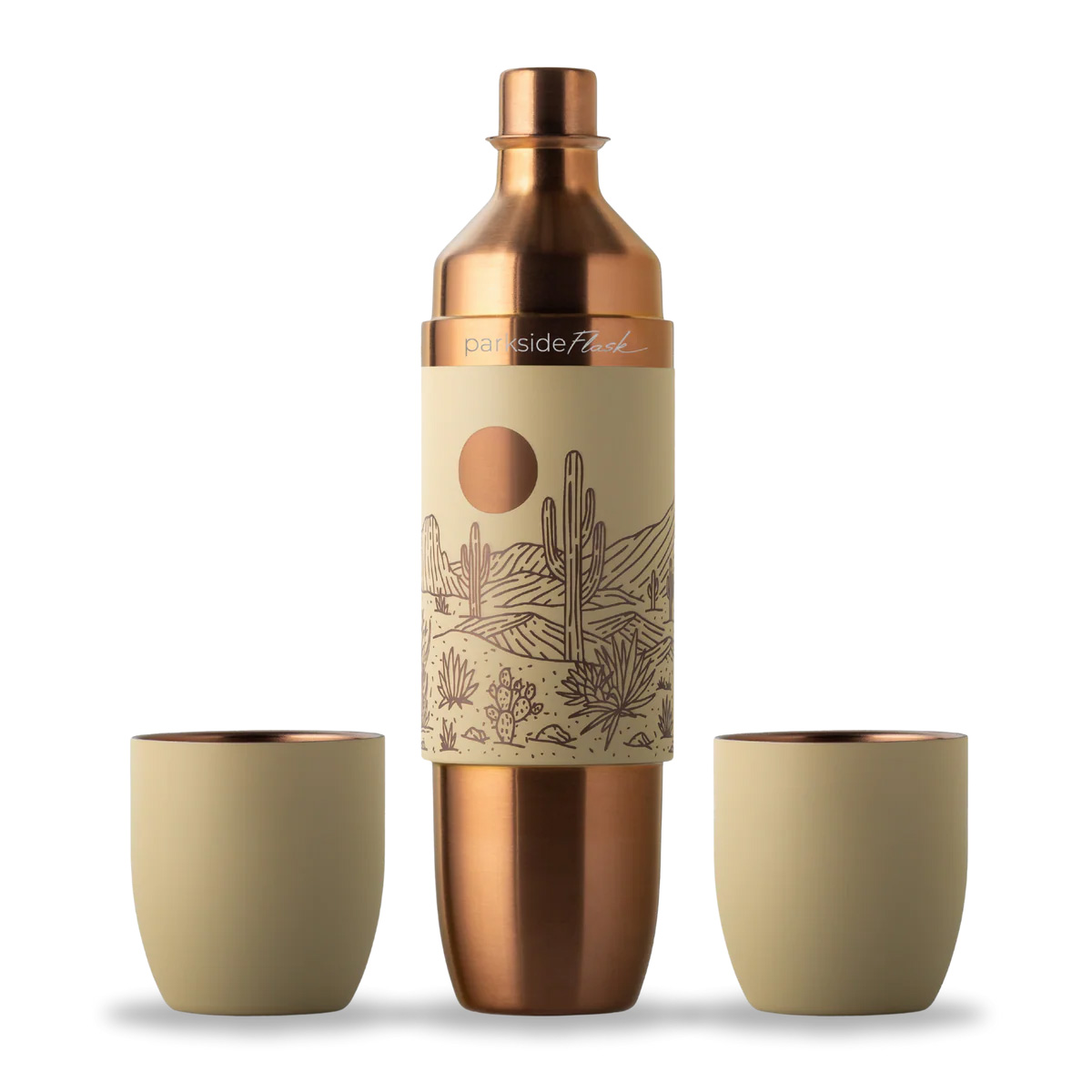
Mikey Rox is an award-winning journalist and LGBT lifestyle expert whose work has published in more than 100 outlets across the world. Connect with him on Instagram @mikeyroxtravels.
a&e features
Meet Mr. Christmas
Hallmark’s Jonathan Bennett on telling gay love stories for mainstream audiences

Jonathan Bennett believes there are two kinds of people in the world — those who love Hallmark movies and liars. And in Season 2 of Finding Mr. Christmas, which the Mean Girls star co-created with Ben Roy, Bennett is searching for Hallmark’s next leading man.
“It’s so fun for people because everyone in their life has someone they know that they think should be in Hallmark movies, right? The UPS driver, the barista at the coffee shop, the dentist,” Bennett says. “So we’re testing their acting abilities, we’re testing who they are, but we’re also looking for that star quality — the thing that makes them shine above everyone else. It’s almost something you can’t explain, but we know it when we see it.”
Season 2’s cast includes a former NFL player for the Green Bay Packers, a few actors, and a realtor. The 10 men compete in weekly festive-themed acting challenges, one of which included having to ride a horse and act out a scene with Alison Sweeney. The contestants were chosen from a crop of 360 potential men, and Bennett gives kudos to the show’s Emmy-nominated casting director, Lindsay Liles (The Bachelor, Bachelor in Paradise).
“She has a tough job because she has to find 10 guys that are going to be good reality television, but also have the talent to act, carry a scene, and lead a Hallmark movie eventually,” he says. To be the right fit for a Hallmark leading man, Bennett singles out five key characteristics: you have to be funny, charming, kind, have a sense of humor, and you have to do it all with a big heart.
Of course, Finding Mr. Christmas wouldn’t be Finding Mr. Christmas without its signature eye candy — something Bennett describes as “part of the job” for the contestants. “I can’t believe Hallmark let me get away with this. I dressed them as sexy reindeer and put them in harnesses attached to a cable 30 feet in the air, and they had to do a sexy reindeer photo shoot challenge,” he says with a laugh. “This season is just bigger and bolder than last. People are responding to not only all the craziness that we put them through, but also comparing and contrasting the guys in their acting scenes when we do them back-to-back.”
Season 1 winner Ezra Moreland’s career has been an early testament to the show’s success at finding rising talent. On seeing the show’s first winner flourish, Bennett says, “Now to watch him out in the world, just booking commercial after commercial and shining as an actor and a model, I think the show gave him the wings to do that. He learned so much about himself, and he took all that into his future auditions and casting. He just works nonstop. I’ve never seen an actor book more commercials and modeling gigs in my life.”
Bennett has been a star of plenty of Hallmark movies himself, including the GLAAD-award-winning The Groomsmen: Second Chances, which makes him a fitting host. Among those movies are 2020’s Christmas House, which featured the first same-sex kiss on the network and had a major impact on Bennett’s career as an openly gay man. “Hallmark’s been so great about supporting me in queer storytelling. But again, I don’t make gay movies for gay audiences. I make gay love stories for a broad audience, and that’s a huge difference, right? We’re not telling stories inside baseball that only the gay community will understand.”
He continues, “The backdrop of a Hallmark Christmas movie is very familiar to these people who watch. And so when you tell a gay love story, and you tell it no differently than a straight love story in that space, they’re able to understand. It’s able to change hearts and minds for people who might not have it in their lives.”
While Hallmark has become a major staple of Bennett’s career, he started off wanting to be a Broadway actor. And before the first season of Finding Mr. Christmas aired, Bennett took a break from TV to make his Broadway debut in Spamalot, replacing Michael Urie as Sir Robin and starring alongside Ethan Slater and Alex Brightman.
“That was my dream since I was five years old – then I booked a movie called Mean Girls, and everything kind of changes in your life. You no longer become a person pursuing Broadway, you become a part of pop culture,” Bennett recalls. “And to be honest, when I hit 40, I was like, ‘I’m probably never going to get to live that dream.’ And that’s okay, because I got to do other dreams and other things that were just as cool but different. So I honestly never thought it would happen.”
Bennett is still determined to make his way back on Broadway with the right role — he calls Spamalot the “best experience” of his life, after all — but he’s got another Hallmark show lined up with Murder Mystery House, which he co-created. The show was recently greenlit for development and intends to bring the Hallmark mystery movie to life. “It’s kind of like our version of The Traitors,” Bennett admits.
Looking back on both seasons, Bennett says that what makes Finding Mr. Christmas stand out in the overcrowded reality TV landscape is that everyone involved makes it with heart: “This isn’t a show where you’re going to watch people throw drinks in each other’s faces and get into big fights. The thing that has amazed me so much about this show, the more we’ve done it, is that every season, 10 guys come in as competitors, but they leave as a family and as brothers. That’s something you don’t get on any other network.”
Finding Mr. Christmas airs every Monday on Hallmark through December 20, with episodes available to stream on Hallmark+.

